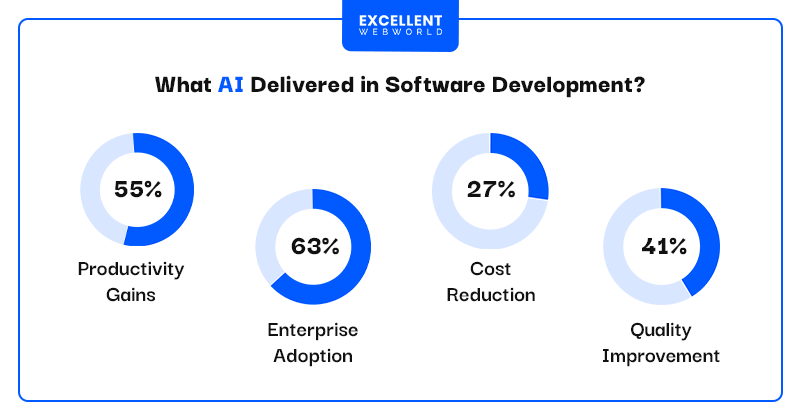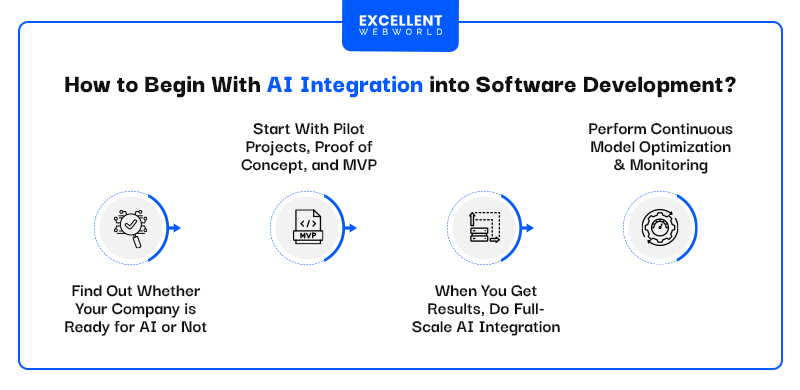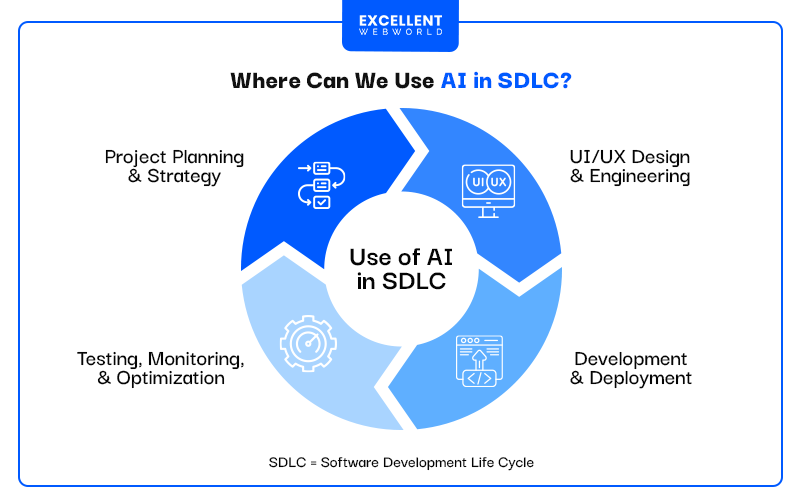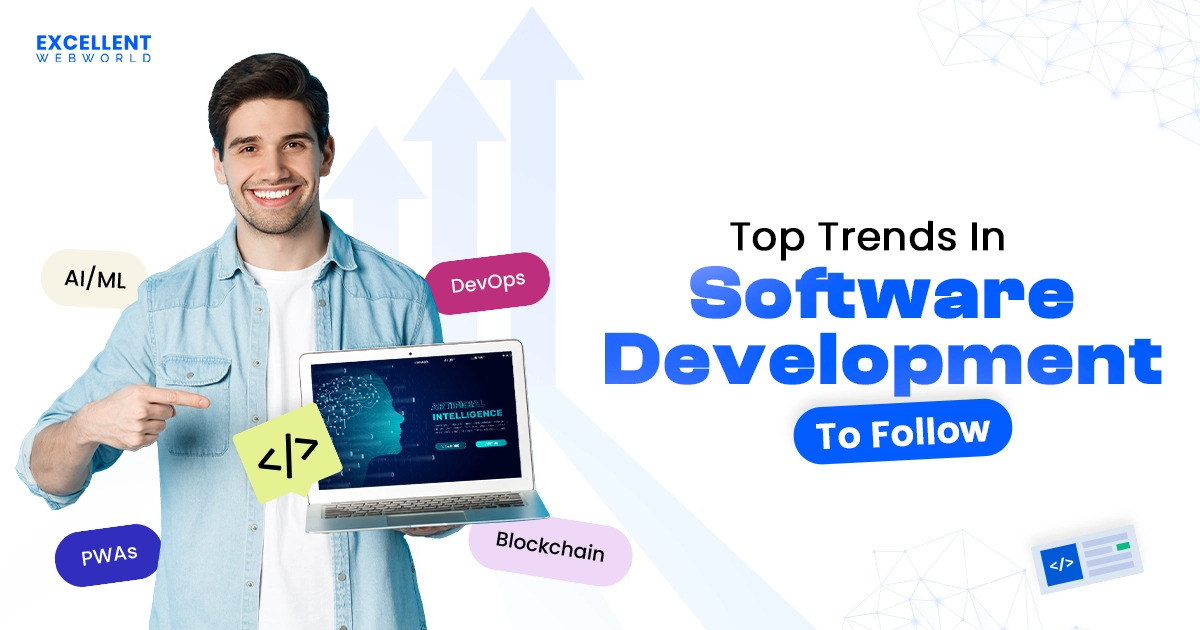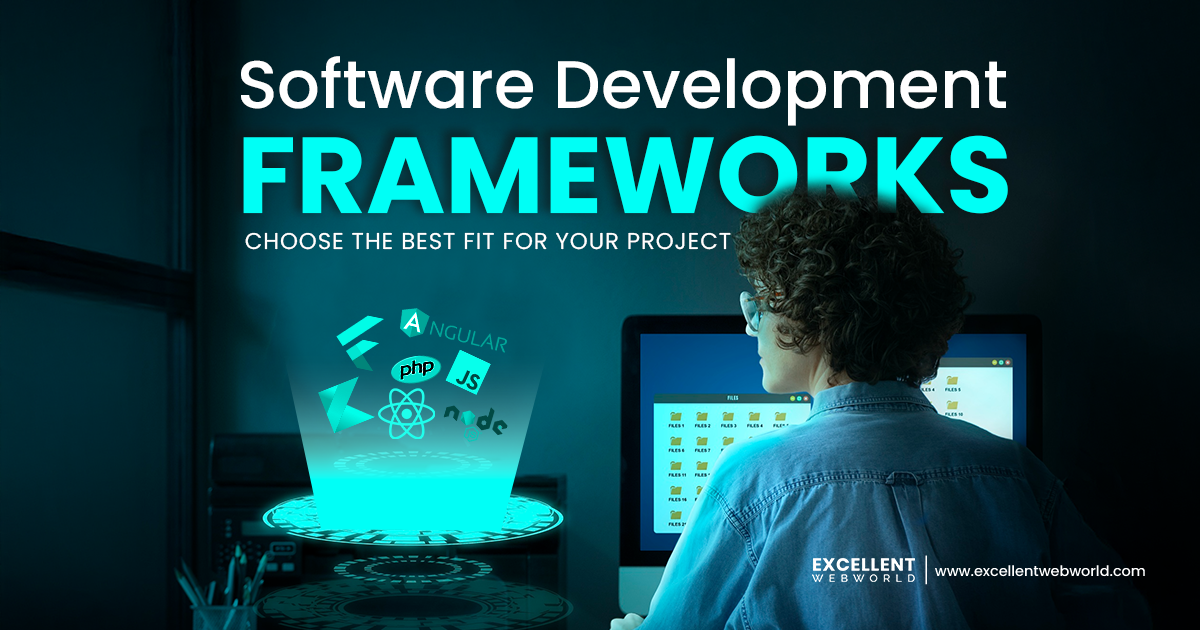Skip AI, and you’re not just missing a trend, you’re surrendering your edge. From inflated software development costs to slower product cycles, the absence of AI is a silent drain on your software strategy. In this article, we’ll share actionable insights and proven strategies from our experience with AI integration. If you’re a CTO, engineering leader, or product manager, you’ll learn why AI is essential for modern software development. We’ll cover how to get started, key tools, and what to watch out for, giving you clear, trustworthy advice to make the most of AI in your projects.
Artificial intelligence (AI) is not just an ordinary upgrade in technology. It’s a transformative force that we’ve experienced first-hand, fundamentally reshaping how software is built, deployed, and maintained.
Over the past few years, our teams have directly integrated AI solutions into software projects across industries, witnessing measurable improvements in productivity, code quality, and speed to market.
AI is quickly becoming a standard part of business around the world. Today, 78% of global companies use AI, and 82% are actively exploring how to add it to their operations. (Source: Exploding Topics)
With a 36.7% CAGR, integrating AI in software development has led to 55% productivity gains, 63% enterprise adoption, 27% cost reduction, and 41% quality improvement.
These numbers are shouting that AI is not something that you can skip for your software product. They reflect the tangible benefits we’ve observed in our own client engagements and internal development pipelines.
Why AI Integration Matters in Software Development
AI is a critical enabler for modern development. Developer productivity gaps, strict project deadlines, code quality and bugs, security, and high competition in the market make it crucial to find smarter ways to build. AI is the answer to all these technical challenges in software development. By exploring generative AI use cases in software development, teams can now build smarter and faster. Even the prominent leaders in IT project management consulting services use AI technology to streamline crucial tasks of software development.
AI integration in software development maintains high-quality standards and meets all the needs by:
This helps businesses shift focus from manual labor to strategic innovation that really makes a difference in the world. As AI fastens the process, the total developer hours decrease, and you can save a lot on your overall software development cost. Expert engineers and product managers can invest more time in solving user problems and less time managing technical parts.
AI integration is not about integrating standalone AI tools operating in isolation; it’s about enhancing your existing ecosystem. Whether through intelligent code creation/suggestions. Smarter testing automation or user behavior analysis, AI is to boost human capabilities without disturbing the established processes.
How to Begin: A Framework for Successful AI Integration in Software Development
Integrating artificial intelligence in software development is not about installing some smart tools or using some AI frameworks – it’s a strategic move that becomes a reason for transformation. Whether you are a CTO finding ways to adopt AI or a product manager under pressure to innovate extraordinarily, following a structured framework can help get positive outcomes. Here are the AI development integration steps to get started:
Step 1: Is Your Company Ready for AI?
Before diving into the integration of generative AI in software development, conduct a thorough readiness assessment. Check the following questions to help you align your company goals with AI.
A maturity audit can help you determine whether your organization is ready or still needs to do foundational work.
Pro Tip: Leverage the expertise of AI consulting services providers to evaluate your company’s stage for integrating AI in software development. This will accelerate progress. For businesses planning to move forward with tailored implementations, partnering with an AI agent development services provider can simplify development and ensure intelligent agents are built to match your operational goals.
May You Want to Check On: Software Development for Startups: A Guide for Founders
Step 2: Pilot Projects and Proof of Concept
If you find that your company is ready to move with AI-based software development, ensure you start with a small project to avoid a massive money burn. With this, you can identify a low-risk, high-impact area where AI and software development can add immediate value together.
Let’s see examples that give you more clarity on how to integrate AI into software development process, which can make the software development process smoother when you work on big projects:
Develop a proof of concept (PoC) to evaluate the feasibility, performance, and ROI of your idea. Then, start with MVP development to gain real-user feedback and clarity on what to improve and where to scale next.
Pro Tip: Begin with reliable MVP development services to gather real-user feedback early, reduce risks, and gain clarity on what to improve before scaling.
Step 3: Full-Scale AI Integration and Automation
When you achieve positive results on your MVP, you can expand to broader use cases. Your key priorities at this stage include:
You have to ensure strong DevOps support and update your governance frameworks to address AI usage, security, and data privacy ethically.
Step 4: Continuous Model Optimization and Monitoring
AI for software development is not something that you set once and forget. It needs continuous monitoring and improvement. Implement tools and processes to:
Establishing an AI Ops team or working with an external AI-powered software development company like Excellent Webworld can help maintain peak performance and ensure alignment with business goals.
Where AI Integration Fits in the Software Development Lifecycle (SDLC)
Artificial Intelligence in software engineering is no longer a futuristic concept. It’s become an essential enabler of smarter, faster, and more efficient software development. From strategic planning to performing intelligent testing, AI-powered capabilities are playing a major role in almost every stage of the Software Development Lifecycle (SDLC).
Here’s how AI implementation in SDLC benefits you and speeds up the process efficiently.
Phase 1: AI in Project Planning and Strategy
Using AI in the earliest stages of the SDLC can enhance the process by making project planning more data-driven and precise. Predictive analytics can forecast your software project’s feasibility, resource requirements, and delivery timelines with high accuracy, which improves decision-making.
An AI readiness assessment helps you determine whether your existing infrastructure and data maturity levels support AI adoption. Moreover, AI can assist in use case discovery. It can evaluate your internal workflows or customer touchpoints to identify the highest return on investment opportunities for AI integration in software development.
You can take advantage of AI-based project planning tools like Jira Align (Atlassian) or just hire an AI development firm that can manage everything for you from beginning to end in SDLC.
In short, AI can prove to be a strategic approach and give you an AI roadmap, guiding enterprises from concept to execution.
Phase 2: AI-Enhanced Design and Engineering
Using AI-powered tools with architecture and system UI/UX design layout offers recommendations based on best practices and historical data patterns. For example, a generative design model can simulate multiple system architectures to determine which one is the best, most highly scalable, and most cost-effective option.
In AI model development, machine learning experts can use pre-built models and datasets to speed up the experimentation phase. AI helps developers and testers define and reuse solution architectures and technical designs while enhancing efficiency and consistency throughout the project.
You can try Replit to experience AI-based software product design and engineering to boost your SDLC speed with great UI/UX design creation.
Phase 3: AI-Driven Development and Deployment
The coding and deployment phase is revolutionizing, thanks to artificial intelligence development tools. Even the non-coders can code now with Vibe coding, and real developers can take assistance from powerful AI tools to increase their productivity. To integrate generative AI in software development, modern IDEs now include AI copilots who work as virtual pair programmers. This is automated software development in an efficient way.
Tools like GitHub Copilot help you complete code, generate entire functions, and point out potential logic errors – all from a natural language prompt. This enhanced software development cycle boosts efficiency while minimizing common errors. Still, teams should be mindful of common mistakes in generative AI development that can introduce bugs, inefficiencies, or ethical concerns into the codebase.
Teams working on specialized domains can leverage fine-tuning large language models (LLMs) to fulfill the needs of domain-specific development tasks. LLMs handle writing compliance-friendly code or optimizing performance for edge devices, and collaborating with expert SaaS development services ensures these AI-driven applications are built and deployed efficiently.
Phase 4: AI-Powered Testing, Monitoring, and Optimization
Testing, monitoring, and continuous improvement through AI in agile software development can deliver significant efficiency gains.
AI-based testing tools automatically generate and execute accurate test cases, analyze the results, and flag regressions. These AI tools adapt over time and learn from failed developments to enhance test coverage and achieve high accuracy.
Core Technologies Enabling Scalable AI Integration in Software Development
Successfully embedding AI in the software development cycle isn’t just about smart tools; it requires a robust support of scalable AI technologies that align with modern DevOps practices. These core technologies will clarify which expertise you have to look for when you hire AI developers to innovate, deliver, and iterate on software products.
| Technology | How Does It Work? |
|---|---|
| Machine Learning and Deep Learning in Software Applications and DevOps | Boost DevOps pipelines with intelligent automation, anomaly detection, and performance optimization by using ML and DL algorithms that are specialized for scalability. |
| Predictive Analytics for Smarter Decision-Making | Take advantage of historical data to forecast trends, minimize risks, and support real-time decision-making throughout the SDLC. |
| Generative AI for Rapid Prototyping and Innovation | Embracing generative AI development services accelerates design cycles and unlocks creative solutions with AI-powered code generation, UI simulations, and data synthesis. |
| NLP, Audio, and Vision in Application Enhancements | Integrating NLP into software gives smart and intelligent interfaces that have capabilities of language understanding, voice recognition, and visual processing to enhance the user experience. |
| Automating Workflows with RPA and MLOps | Streamline software development and operations with AI-based repetitive task automation, continuous model delivery, and monitoring. |
You Might Find This Interesting: How to Build an AI App?
How Organizational Capabilities Scale through AI + Human Synergy
A common myth about AI integration in software development is that it leads to job cuts. In fact, forward-thinking leaders see an AI native app as an opportunity to multiply force, freeing human talent stuck in repetitive tasks and enabling teams to focus more on innovation, strategy, and problem-solving.
AI integration is not something limited to efficiency; it’s about a new vision for software development as well as software teams. You can take help from a business IT consulting company like Excellent Webworld to understand how you can start with AI technology for your business idea.
Moreover, you can opt for nearshore software development or offshore software development to get the best from your outsourcing model. Find which model is more suitable for your requirements and gives you a talented AI developer team at affordable rates.
Lessons from Companies That Successfully Integrated AI into Software Development
Here are two prominent examples of top companies that integrated AI into their operations and achieved positive outcomes:
The Future of AI Integration in Software Development
As AI-assisted development continuously rises, AI’s impact on software development is becoming increasingly profound. When the ChatGPT trend came, many companies started searching to hire ChatGPT developers, but the future of AI is not limited to ChatGPT. Many AI trends are ready to welcome the future of software development.
Now, emerging AI-driven technologies are set to boost the industry to the next level, offering new tools and methodologies that enhance productivity and accuracy. Check the following table, which is derived to understand the future of software engineering with AI.
| Future Trend | Description |
|---|---|
| AGI (Artificial General Intelligence) | It’s a future possibility that AI systems will have human-like understanding and reasoning. This could potentially transform how software is architected, tested, and developed. |
| AI-Driven Code Generation | Advanced AI models can assist in writing code snippets by simply responding to a command in natural language, significantly reducing development time and manual effort. |
| Intelligent Debugging | AI integration can predict bugs that humans can miss and suggest fixes by analyzing historical error patterns. This improves accuracy and reduces debugging time. |
| Automated Code Reviews | With AI agent development, you can conduct automated code reviews to set standards and best practices, detecting issues that are mostly overlooked in manual processes. |
| Enhanced Collaboration Tools | AI-driven software development improves team communication and project management by organizing tasks, tracking progress, and forecasting results. |
| Adaptive Learning Systems | AI customizes learning experiences for individual AI programmers, providing personalized content and feedback to boost continuous skill development. |
Final Thoughts: Unlock Growth with an AI Integration Software Development Company
Overall, embracing AI integration in software development is not optional; maybe it’s a choice for now, but not for so long. After some time, every software product will launch with AI-integrated features to showcase itself as a unique and smart solution. That’s why, for the new era, integrating AI in software engineering is a strategic move to stay competitive, agile, and innovative.
But the thing is, if you want to truly unlock AI’s potential, you need more than just tools – you need the right expertise. An experienced nearshore software development company, like Excellent Webworld, can assist you from the start, working on an AI business idea to developing it for the real world.
With a track record of delivering intelligent, scalable AI solutions, our team of experts empowers businesses to navigate this transformation confidently. We don’t just build software to add to our portfolio; we build smarter paths to grow consistently.
If you are ready to explore how AI can become your secret ingredient to accelerate your success, let’s connect for an AI readiness assessment. Your next step toward innovation is here.

Article By
Mahil Jasani began his career as a developer and progressed to become the COO of Excellent Webworld. He uses his technical experience to tackle any challenge that arises in any department, be it development, management, operations, or finance.

